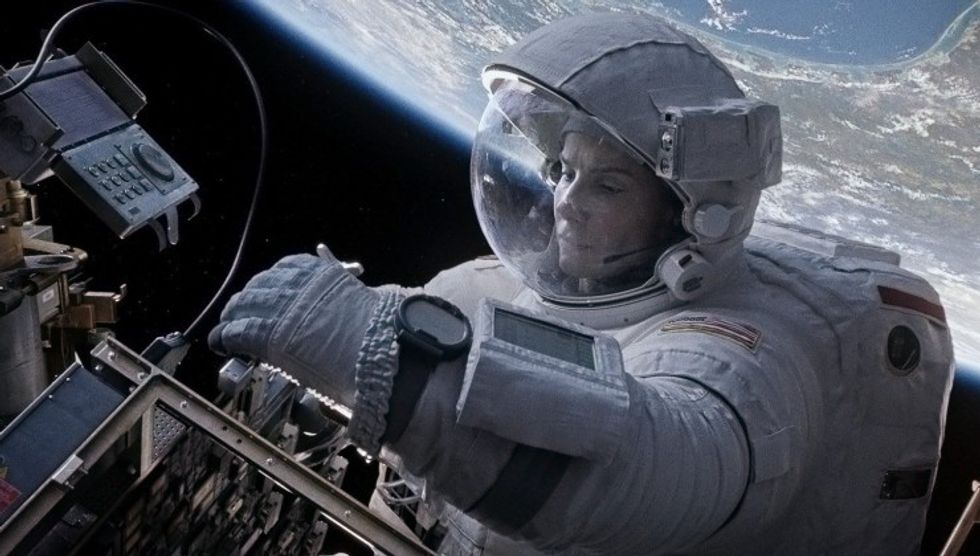What Are the Five Key Elements to Classic Hollywood Storytelling?
These elements are classics for a reason.

Lately, I have fallen into a rabbithole of watching Turner Classic Movies on HBO Max and have been getting into a lot of classic Hollywood cinema. There is something simple yet moving about these classic films that either end with a happy ending—or death.
Classic Hollywood cinema, or the Golden Age of Hollywood, is a vague term that describes films made by the big eight Hollywood studios of the era. These films can sometimes feel cheesy from a modern perspective, but classic Hollywood cinema laid the groundwork for how we approach storytelling in film and decided what narrative beats need to be hit to have a fully functioning plot.
Jordan Schonig, a professor with a Ph.D. in Cinema and Media Studies from the University of Chicago, breaks down the key elements of the classic Hollywood narrator in his film studies lecture, and how we can still see the seed of the Golden Age of Hollywood in modern storytelling. You can check out his full lecture below.
What Is Classic Hollywood Cinema?
Classic Hollywood cinema is a term used to describe the visual style and narrative conventions of American cinema between 1927 and 1963. It is important to remember that during this vague period that American film began to tighten its grip as one of the most pervasive forms of the medium, solidifying specific elements of storytelling as the most effective and intriguing way to captivate an audience.
The classic Hollywood narrative was strict as it followed the extremely simple and conventional structure of beginning, middle, and end. There was always a distinctive end that was decided upon by the studio making the film that could not be disputed by the average moviegoer.
What Are the Key Elements to Classic Hollywood Narrative?
These are the key narrative conventions that defined Classical Hollywood storytelling:
- Psychologically defined individuals
- A struggle to solve a problem or achieve a goal
- A conflict with other people or external circumstances
- Characters have agency, and causality moves the story forward
- There is a decisive victory or defeat
The struggle to solve a conflict is often entwined with two goals: one romantic and one other. Eventually, these conflicts merge, and the romantic interest begins to get involved in the main character’s other conflict.
It’s important to note that the classic Hollywood narrative is set in motion by a character’s desire, and that desire develops as the narrative and the characters develop. Repetition of blocking and camera movement evoke the idea that parallel scenes are in direct contrast with each other or that something has changed from the original scene, forcing us to examine the shot from a new perspective.
The Deadline Structure
A way to keep the audience engaged with the narrative of your film is by creating a narrative structure that accelerates the action and plot toward a central event or action that must be accomplished by a certain time. The time the audience must follow is not necessarily the duration of the runtime, but the duration of time established by the plot.
It's a popular form of structure because it creates suspense and tension for the characters and the audience. We know that something will happen at a specific time in the film’s world, and we must wait with our anxieties and fears until that time comes. Classic Hollywood storytelling enjoys using a deadline structure to create a rhythm that can be slightly altered to follow the traditional beats of the story, and we still enjoy seeing it today for that feeling of anxiety that comes with knowing that the character's time is limited.

Modern Films with These Elements
Although most modern films have abandoned Classic Hollywood storytelling in favor of more grounded and deeply human stories, we can’t ignore the key elements of modern cinema.
Stories with basic plots like Gravity, The Nice Guys, and Alienall follow the classic Hollywood narrative, finding the beauty in the simplicity of the plot structure, and discovering new ways to play to or against audience expectations.
Most films that do not declare themselves as experiments still play with the classic Hollywood narrative whether they are conscious of it or not. It is how we have come to understand storytelling in film for the last century, and it is hard to break out of habits that are not that bad. If you want to play with your narrative structure, take these five elements, and see what happens if you don’t add that element into your story or if you do the reverse of that specific element. This could be a fun exercise that could sharpen your writing skills, and make you more aware of narrative tropes in your favorite Golden Age films.
What is your favorite narrative from the Golden Age of Hollywood? Let us know in the comments why!
Source: Film & Media Studies with Jordan Schonig
















